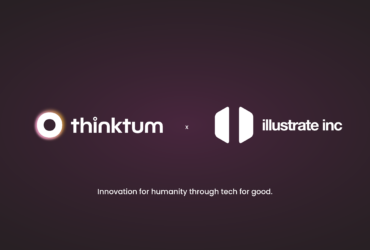thinktum and the Future of Insurance

Ask anyone over 50 about life insurance and their answer probably sits somewhere between, “I have insurance for all my loved ones and it makes me feel secure” to “I keep thinking I should look into it, one of these days”. Ask a 30-year-old the same question and you will probably hear, “Why do I even need life insurance?”.
Many types of insurance policies are legally required, such as auto insurance and depending on your down payment, mortgage insurance. Life insurance, however, is not. And there is a lot of competition out there. How can an insurer differentiate themselves from their competition in order to make more conversions?
The best of both worlds
Some insurance organizations have decided to add new and different branding to their business – one that speaks directly to younger consumers who may be resistant to purchasing a policy. They still have their old and established life insurance audience as well, but by also offering no medical policies online, they have the best of both worlds.
The truth is what can really differentiate one firm from another is its technology and the efficiency of its customer journeys. Implementing AI-driven components can make a real difference in how people move through online applications. Here’s why.
With artificial intelligence, questions are not predetermined. Each sequence is personalized to the applicant all the way through the process. Men aren’t asked about mammograms and women are not encouraged to have a prostate exam. At thinktum, our Pure no-code, AI-driven solutions are built on plain language, hyper-personalization, and secure data leverage. Ambiguous questions are broken down and clarified to avoid misrepresentation and the application process can be completed in minutes.
Need help in finding a tech vendor? Read this: a blueprint for finding the right technology partner.
In order to get a better sense of what’s going on and what to expect in the future, we interviewed Eugene Shafronsky, Business & Technology Strategic Leader, to get his thoughts on the current industry landscape. Eugene has spent his career in various roles within the industry and has a unique perspective on insurance, technology, and how insurance might evolve in the near future
Where have we come from? – Insurance of the past
As with most things, various technologies have changed the industry more than anything else, beyond a global pandemic striking. Insurance began as a people business. People sold policies in living rooms. Relationships were built that sometimes lasted over a generation. Clients understood that it was a complicated process – with long, dense, and sometimes obtuse application questions and medical requirements – including lab results, doctor’s visits, and medical reports. They mostly bought whole-life policies and kept them for decades. Underwriters spent most of their days chasing down applicants to answer additional questions, confirm diagnoses, and complete forms, medicals, and applications. Non-disclosure was an issue and most risk mitigation was grounded in issuing fewer policies and protecting the business at all costs (but perhaps not the insured).
Adds Shafronsky:
“When I started, everything was paper based. Electronic applications only started coming out a few years after that. But even then, e-applications started with some type of simplified paper application, which was turned into a digital process.”
“It was somewhat difficult for advisors because they, like many others, find change to be daunting. And I guess, it required them to learn new things, which is also challenging at times.”
Where are we now? – On the cusp of a tech revolution
Many organizations aren’t even using digital files now, so everything they do is still paper based. And to be clear, we don’t consider editable PDFs as an actual “online process”. Some large firms remain slow to digitize their customer journey, products, and delivery method because their employees are older, less welcoming to change, and executives are resistant to wholesale disruptions they fear may not work. They are invested in maintaining the status quo because it’s easier and frankly, their retirement is just around the corner.
“I think that most insurance organizations are structured with endless layers of decision-makers with various opinions, and that it’s very difficult for them to come up with a clear conclusion. There’s no magic solution here, but if that can be resolved, it will be very helpful, because it seems like every business has an endless amount of people who potentially contribute to a decision or have their own take on it. Things are often delayed. And because of that inability to decide, they lose the sense of urgency. As a result, they miss many opportunities.”
Other companies are inching slowly toward incorporating more technology into their product offerings, or customer journey. They understand that times have changed, and the insurance industry’s heyday will likely never return. But this isn’t strictly about technology. The industry, regardless of reality, is seen as resistant to cultural, corporate, and philosophical diversity. Without extensive change, it will be harder for industry players to attract employees, executives, and thought leaders to join their teams.
Here’s Shafronsky:
“I think that there is cultural understanding from all companies today, that they have to onboard technologies. The new generation of advisors says, ‘You know what, the technology is here. I have no choice; I have to use it’. So I think that same mindset we now see from all players – big or small – and new companies. We can tell that they understand they need the technology to stay relevant.”
It seems these days that relevance may be arbitrary, depending on your market. Many companies are “doing just fine, thank you”, with their business chugging along as it has for decades. They understand their current market is probably going to age out without a plan to speak to younger customers, but even that doesn’t seem to be enough to urge them to update their processes.
“There are lots of challenges, mainly cultural ones. It’s very difficult to convince those who need to use technology to actually implement it. But it’s changing nonetheless. As a generation, I think we’ll see progress, more tech-driven products, and collaboration-based solutions. We see advisors from the previous generation begin to adopt the technology that exists today, because they feel they have no choice. Not necessarily because they like it or find value in it, but it’s being somewhat forced onto them.”
What’s ahead? – More personalization, faster digitalization, and even more AI ubiquity
The insurance industry will never disappear. It does, however, need to adapt the way it conducts business to meet the needs and wants of a new generation or two of consumers. Technology adoption won’t be the only disruptive element; another may be the next generation of insurance workers.
This isn’t to say that staff will be eliminated because of technology upgrades, which is always the biggest fear when discussing artificial intelligence. The truth is, AI simply allows people to adapt their work to focus on more meaningful tasks that require a human touch, such as answering questions and providing support. It means bringing on additional employees in tech-related or adjacent areas, such as project managers and security professionals. Because AI won’t steal jobs, but the harsh truth is, someone with the skills to leverage AI, most probably will.
Insurance also needs a cultural revolution. They need to join the rest of us in the 21st Century, be committed to true diversity, and hire more new grads to inject some technology expertise and perhaps even youthful enthusiasm into the field. There are too many anecdotes about women or POC executives who leave the industry because it’s so culturally antiquated in many ways. People aren’t given the opportunity to blaze a trail, speak their mind, toot their horn, or make significant changes to organizational processes. As a business community, we first need to shift our mindset in order to impact the industry for the better. Nothing will change until we do.
“As an industry, we’ve been failing to consider the next generation. We can’t put too much emphasis on technology because that won’t be the only issue to solve.”
The industry has experienced an enormous amount of transformation and churn during the last five years. Updating technology is no longer considered optional if making business profitable is the goal. As technology providers like thinktum continue to pave the way, we all need to understand that evolution is inevitable and not as challenging as one might think.
Let’s give Eugene the last word.
“If I look 10 years ahead, I think that we will have a number of different approaches. We spoke about technology, and I think tech is obviously going to be increasingly dominant. I believe that with younger people holding leadership positions in the industry, we’re going to see more and more products being consumer-facing without intermediaries. I think the advisor and distribution forces are going to become more competitive and – online – perhaps working almost like a call-center type of environment. Companies will be able to leverage data much better, to find easier ways to create products and distribute them. And finally, on a different note, I see wellness playing a more significant, central role versus what it does today.”
The industry has an enormous amount of growth potential and the technology being developed is exciting and revolutionary. Insurance can be streamlined, and made frictionless. Consumers want more and different options now; we believe the organizations that meet those challenges today will reap many benefits later.
To learn more about thinktum, visit our LinkedIn page or book some time with us!
This article’s featured collaborator
 |
Eugene Shafronsky, Business and Technology |
 Eugene Shafronsky, Business and Technology |





